Shade-loving and shade-tolerant plants for the garden

Most plants prefer open, sunny areas and fertile soil. However, when decorating the garden and the local area, there are many shady places where the soil is more moist and less saturated with nutrients. For growing in such areas, you need to choose shade-tolerant plants that tolerate the absence or lack of sunlight well.
Landscaping uses a variety of trees, shrubs, and herbaceous plants to create a stylish flower bed or lawn.
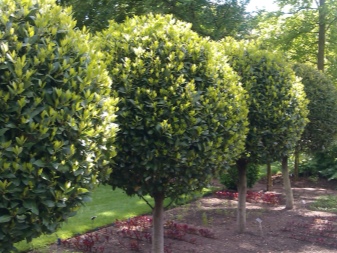
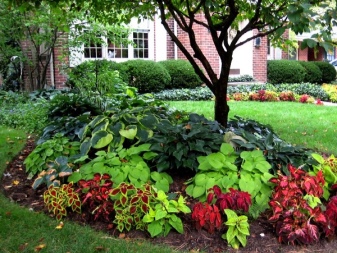
Peculiarities
Each garden or summer cottage has shaded areas where sunlight does not get more than 3-4 hours a day. These can be under large trees, near a fence, or on the north and west sides. On such sites, you can put a gazebo or equip a recreation area. However, plants are required to create a comfortable and cozy atmosphere. They will not only create additional shade and saturate the air with a pleasant aroma, but also protect from wind and dust. There are two types of plants that can be grown in the shade.
- Shade-tolerant. This type includes all species that love sunlight. However, for a comfortable existence, 5-6 hours in the morning or in the afternoon are enough for them. The flowering of such plants is characterized by a short duration and low intensity. This category includes woodlands, peonies, oak anemone.
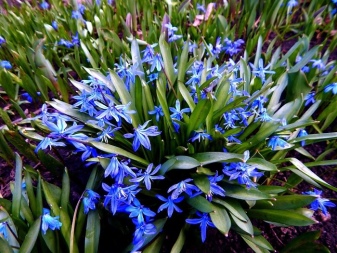

- Shade-loving. This type includes plants that prefer to grow in the shade, where the sun's rays are rarely or completely absent. Typically, crops are characterized by rich green foliage. This category includes hosts, ferns, lilies of the valley, lungwort.

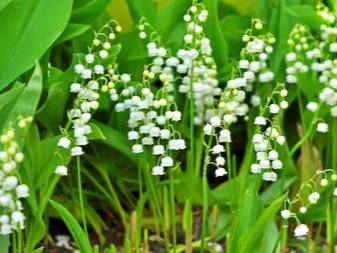
For shady places, plants are selected, which can be conditionally divided into two types: deciduous and flowers. When choosing them, one should take into account certain features, rules and nuances of site design. Shady areas are suitable for planting ornamental shrubs and evergreen trees, as well as flowers that prefer partial shade. All shade-loving garden plants have one thing in common:
- prefer moist soil;
- can secrete special substances that can inhibit the growth and development of other shrubs and flowers.

Both annuals and perennials are suitable for growing in the shade. To decorate the territory, you can use monogroups and mixed plantings. In this case, the most shade-tolerant flowers can be planted under trees and between rows of shrubs.
However, before planning plantings, plant compatibility should be considered. Plants such as laurel or privet are recommended to be planted separately - they do not withstand proximity to herbaceous plants.
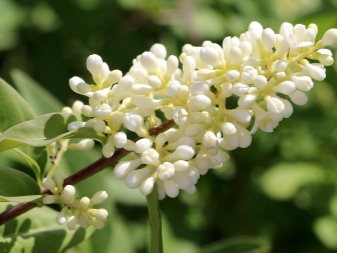
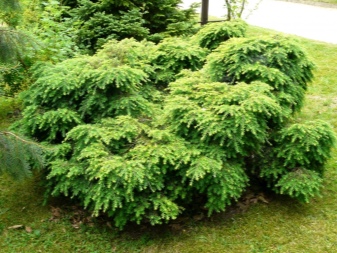
Species overview
The main factor affecting the choice of plants for a shady corner is their tolerance to the lack of constant sunlight and the characteristics of the soil. In the garden or for decorating flower beds, you can plant flowers, trees and ornamental shrubs that love moist, acidic and slightly acidic soil, and also feel good in the shade.
Under small-leaved species such as birch, aspen, alder, maple or willow, the soil is often dry. However, in the period before the foliage bloom, the shadow is less common there. Some perennials will feel good under them, especially if they are planted on the south side.Under coniferous trees, the soil becomes acidic due to litter, so it is better to plant decorative and fruit and vegetable crops in these areas.

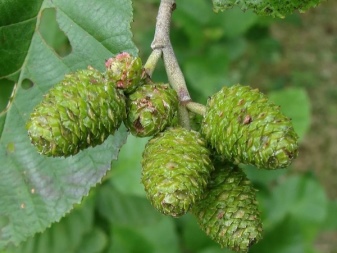
Among the plants that tolerate acidic soil well, you can choose:
- cinquefoil;
- viola;
- herbal cloves;
- trilliums, etc.
Some of them, such as fern and viola, can be grown as ampelous plants and used to decorate flower beds.


Trees
Shade and partial shade are well tolerated by many conifers and fruit trees. When decorating a garden or a personal plot located in the shade, you can use both single plantings and combined ones. Some herbaceous plants and flowers can be planted even under the crowns of these trees. Distinctive external features:
- dense crown, usually massive, spreading;
- a large number of branches in the lower tier;
- the bark of the trunk is smooth, without deep cracks.
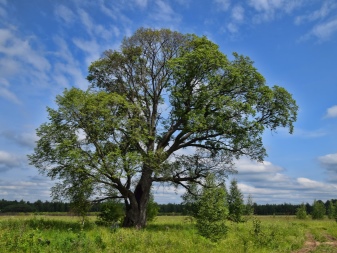
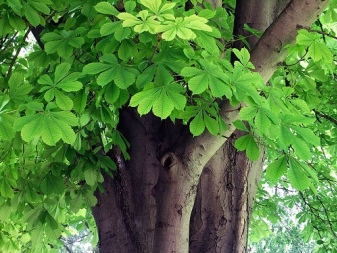
Lipu can be planted not only in the shade, but also in the sunny half of the site. Differs in undemanding to soil and watering, adult lindens are resistant to drought and heat. You can even plant young linden seedlings in sandy soil. The tree is characterized by fast growth and lush crown, therefore it can be used in landscape design to shade places on the playground or in the recreation area.
Cedar it can grow up to 40 m in height, so it is best to choose decorative undersized species for planting in the garden. Selected varieties of evergreen cedar take root well on any soil and do not require special care. The shade-loving plant can be used in landscape design to decorate a garden, a local area, decorations near alpine hills, and also be planted along paths and a fence.


Davidia used more often for single planting in the garden. The tree serves as a decoration of the territory thanks to the cream-colored bracts.
Canadian hemlock, depending on the variety, can be a large tree or a small spreading shrub. The plant is resistant to temperature extremes and tolerates severe frosts. Dwarf varieties are suitable for gardening ridges and rockeries, for planting in small gardens and summer cottages. Does not tolerate stagnant water and too salty soil. Grows well in moist fertile soil.
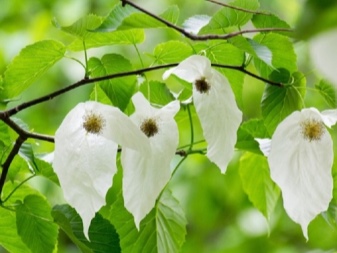
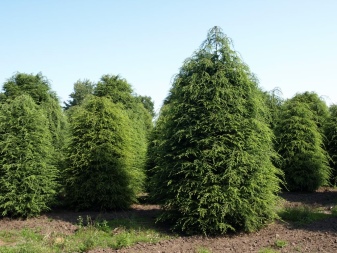
Horse chestnut not very picky about care and grows well with moderate watering. The shade-loving tree is suitable for planting on loose sandy loam or clay soils without stagnant water. Foliage can turn yellow and fall off in hot and arid climates.
European beech refers to shade-tolerant. Grows well in fertile soil in the sun, in the shade and partial shade. Needs constant soil moisture.
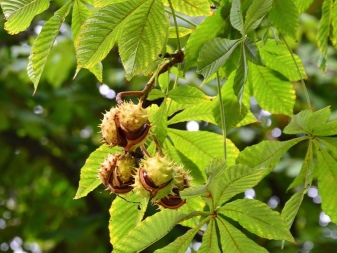
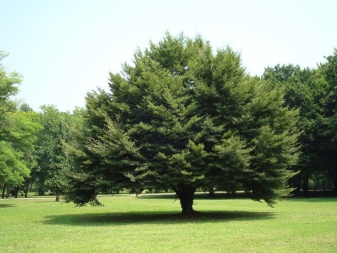
Common ash takes root well and grows quickly. Feels the same in both lighted and shaded areas, it can grow in acidified and arid soil.
Rowan. A small tree that can grow in any soil. It tolerates drought well and bears fruit even in the shade.
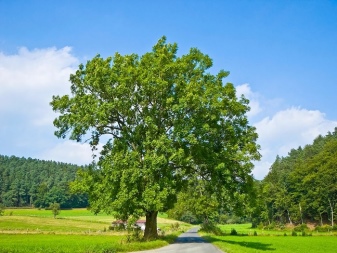
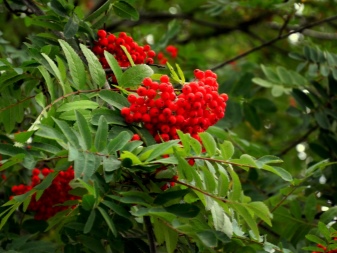
Elm. By providing the plant with constant watering, rapid growth can be achieved. The elm is resistant to frost and temperature extremes, but can be affected by Dutch elm disease.
Birch. The tree does not require special care conditions. Grows well in shade and arid soil.
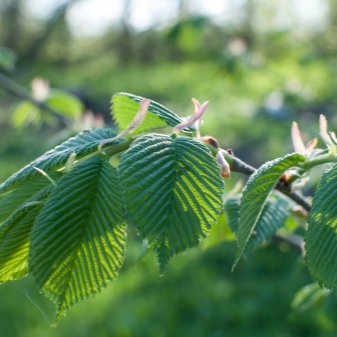
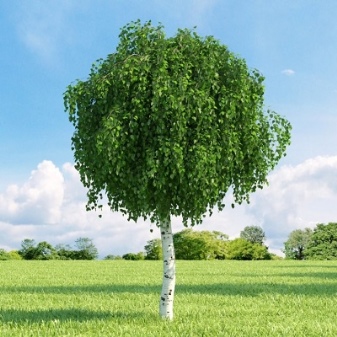
Willow. Depending on the variety, it can be more demanding on soil and watering. For the garden, it is recommended to choose decorative undersized varieties.
Fruit trees. In partial shade, you can plant some varieties of apple trees, cherries and cherries. Some columnar and decorative types of fruit and stone fruit crops tolerate well the absence of direct sunlight.

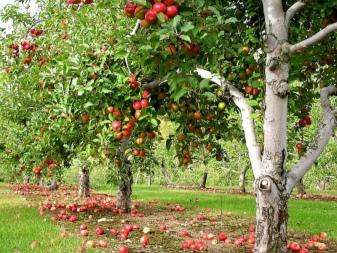
Shrubs
In shady places, many ornamental and berry bushes feel good. Unpretentious to care for, they are not only able to delight with a lush color, but also give tasty and healthy fruits. Flowering and ornamental foliage grown in the shade are widely used in landscape design.The bushes are used for planting hedges, near walking paths and gazebos. Their succulent foliage is an excellent design option for both a summer cottage and garden area, and a neat lawn. And their abundant bloom cleans the air of pollution and fills it with an inimitable aroma.
- Common wolfberry (wolfberry) does not tolerate much sun, therefore must be grown in a shaded area. Not only its early flowers, but also bright berries have decorative qualities. The only drawback of this shrub is its toxicity. The fruits of the plant are deadly.
- Hydrangea refers to shade-tolerant crops. In shaded areas, hydrangea blooms less than in the sun, so you should choose undemanding varieties. The most unpretentious species is panicle hydrangea.
- Rhododendrons grow well in shade and partial shade. The best places to plant a rhododendron are isolated and secluded areas. The place must be well protected from the wind, so the back of the building is suitable, as well as near the fence and gazebo. Special care requirements: moderate watering.
- Holly - the most suitable place for planting is a shaded area, protected from drafts. The bright rays of the sun can burn the leaves of the holly.
- Fuchsia can be grown both as annual and as perennial. The shrub prefers shady areas of the garden and well-moisturized soil. The flowering of the shrub can be ensured by regular application of mineral fertilizers. The plant does not tolerate low temperatures, therefore, in case of persistent frosts, it is recommended to bring it into the room.
- All types of currants (white, black, red) take root well on sandy and loamy soil. The shrub easily tolerates moisture and is undemanding to sunlight.
- Gooseberry and its hybrids prefer shady areas. However, gooseberries are more demanding on the soil than other fruit bushes. It should be well hydrated.
- Blueberry unpretentious in care, grows well on any type of soil. Planting in groups of 2.3 or more plants is recommended for pollination and increased yields.
- Hazel (hazelnut) tolerates low temperatures well and does not require special conditions when choosing a soil. The exception is swampy and peaty soils.
- Raspberries - a versatile garden shrub that can be grown not only for picking berries, but also for decorative purposes. The plant is resistant to disease, frost and drought, grows on different types of soil.
On a note! It should be borne in mind that some cultures are demanding about the neighborhood and can get sick due to a lack of compatibility.

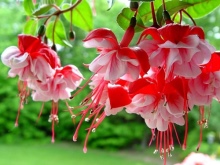
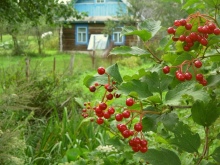
Herbaceous plants
Some flowers grow in the shade in the country and delight the eye with beautiful flowers. Plants are suitable for growing in flower beds and flower beds located in the most shaded areas of the garden.
Annual shade-loving plants:
- balsam;
- ever-flowering begonia;
- fragrant tobacco.
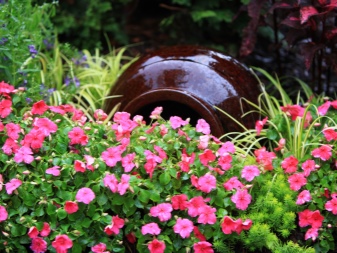
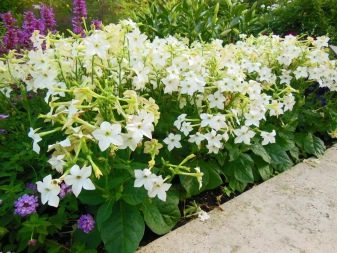
Shade-loving perennials:
- badan;
- host;
- aconite;
- lily of the valley;
- astilbe;
- dicenter;
- brunner;
- cyanosis;
- lily of the valley.
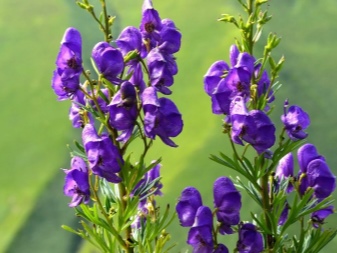
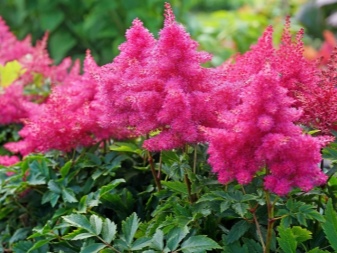
Tall perennials:
- Volzhanka vulgaris;
- raven racemose;
- toothed buzulnik;
- Japanese anemone.
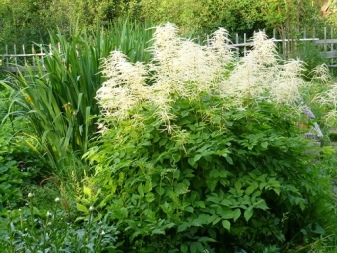

Perennials blooming all summer:
- day-lily;
- delphinium;
- reimania;
- pansies;
- balsam;
- astilba;
- astrania;
- mimulus.
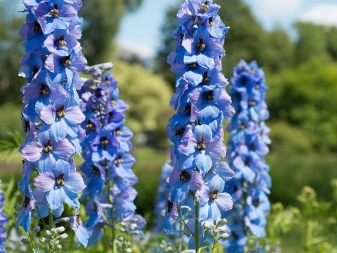

Which ones to choose?
When choosing plants for planting, you need to take into account not only the specifics and type of herbaceous crops, but also determine the degree of shading of the site. Climatic conditions should also be taken into account. In the suburbs and central regions of Russia, it is best to choose perennials that are resistant to temperature extremes. Not every plant is able to fully develop and grow with a lack of sunlight. For a stylish garden, choose flowers and plants that tolerate shading well.On the largest summer cottages and in the garden, it is necessary to mark less illuminated places and draw up a planting plan.
Trees and tall herbaceous plants will look good at the boundaries of the site. Considering compatibility, it is best to plant trees and shrubs throughout the garden. This will allow you to zone the site while leaving enough space.
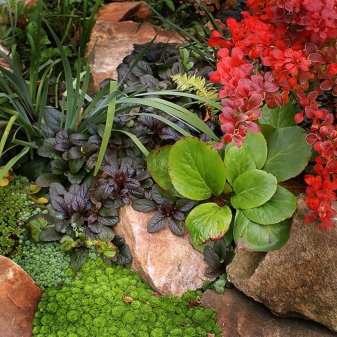

Care Tips
Most shade-loving plants are unpretentious. However, there are a few special conditions that will affect flowering duration and growth. Moistened soil is suitable for growing primroses, hellebore, astilbe and geranium. In the thick shade and acidic soil, stonecrop, kupeny, magnificent elecampane feel well.
Shade-loving plants are used to moist, slightly acidic soil. Despite the evaporation of moisture, such plants need constant and abundant watering. But water stagnation should not be allowed, otherwise the surface roots will rot.
If the soil is heavy, dry or sandy, additional drainage from broken bricks or pebbles should be provided in the planting pits.
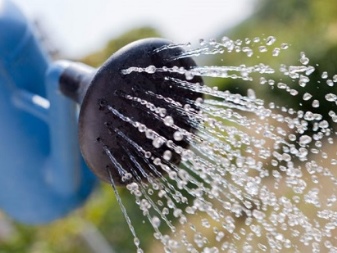
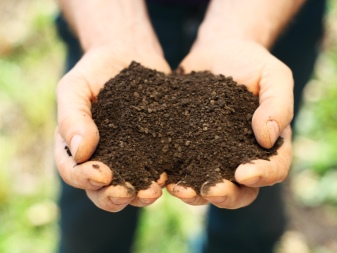
How to arrange a flower bed?
Neat flowering flower beds will decorate any backyard and suburban area. Tips for creating and decorating a flower bed with shade-loving plants:
- do not use flowers other than rhododendron and hydrangea;
- consider the distance required for the full development of flowers;
- place plants with white or light pink flowers in the corners of the flower bed as a natural light;
- do not use perennials with colorful leaves in the general planting;
- the flower bed will look good if you pick up shrubs with bright flowers;
- you can supplement the flower bed with dwarf or decorative conifers.
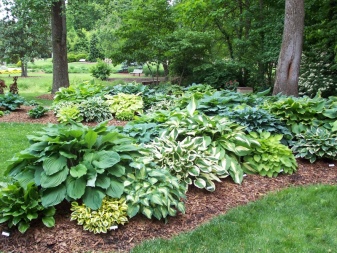
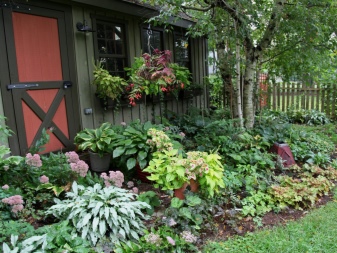
Examples in landscape design
A distinctive characteristic of flower beds and flower beds formed from plants that prefer shade is contrast. Landscape designers advise taking into account the shape and color of the leaves, as well as the flowering period, so that the composition is harmonious and beautiful.
When decorating the landscape with shade-loving plants, it is recommended to use the multi-tiered principle. Tall specimens are planted in the middle and background, with dwarf flowers and climbing plants in the front. There are a lot of options for using shade-tolerant plants in landscape design.
To create compositions, you can use a self-made plan or use a ready-made example from professional designers.
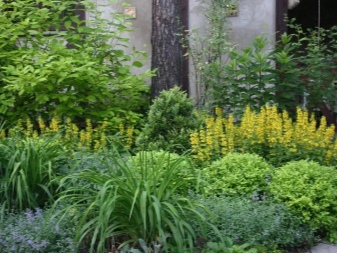
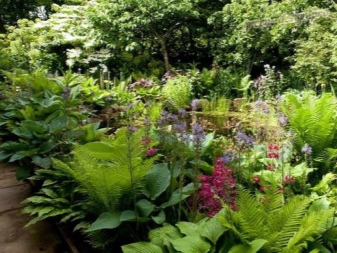
Sunny island
Ornamental plants with bright yellow flowers will create an atmosphere of bright sunlight. The composition can be based on early spring eratis and diluted with crocuses. An elegant flower bed of blue and purple crocuses will make a bright contract for yellow primroses. Thanks to this combination, the flower garden will sparkle with bright colors in the very early spring.
The pattern of the flower garden needs to be thought out in advance, before planting flowers. On the outer contours, you can plant crocus corms, and take a winter spring for the filling background.
Do not remove wilted plants - they are capable of propagating by themselves by seeds. Thus, the flower bed will be renewed every year.
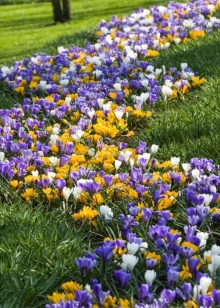
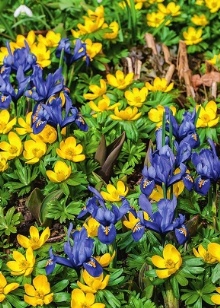
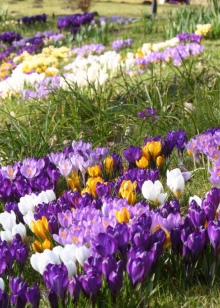
In the next video, you will find a selection of shade-loving and shade-tolerant plants for landscape design.







































































































The comment was sent successfully.